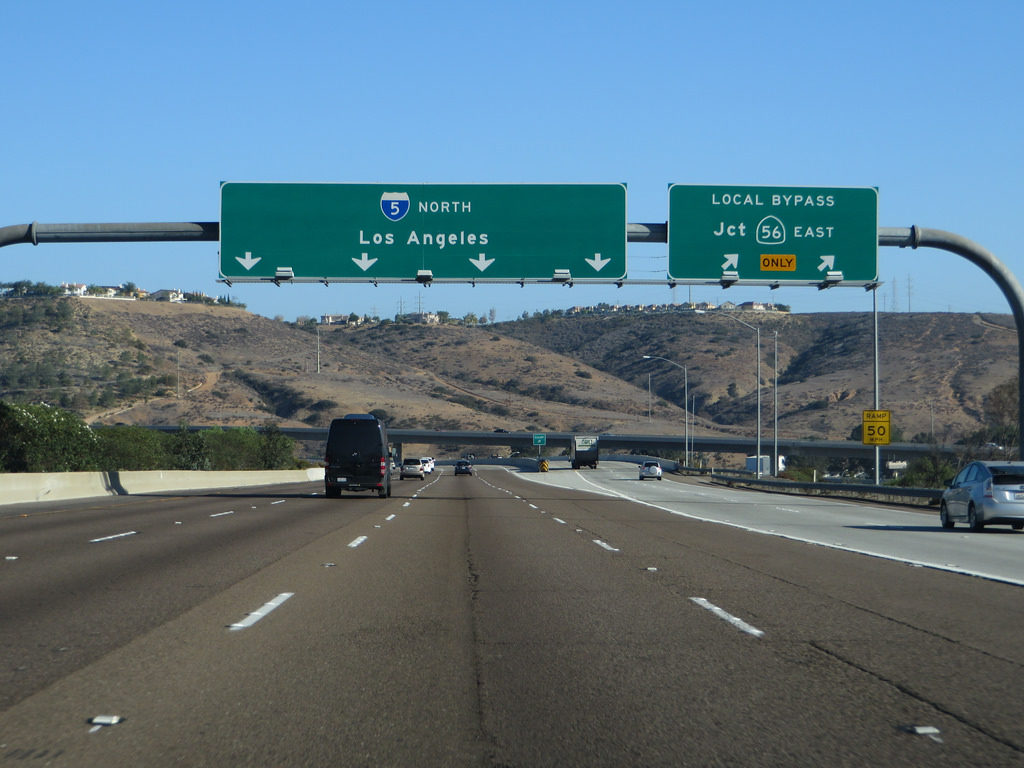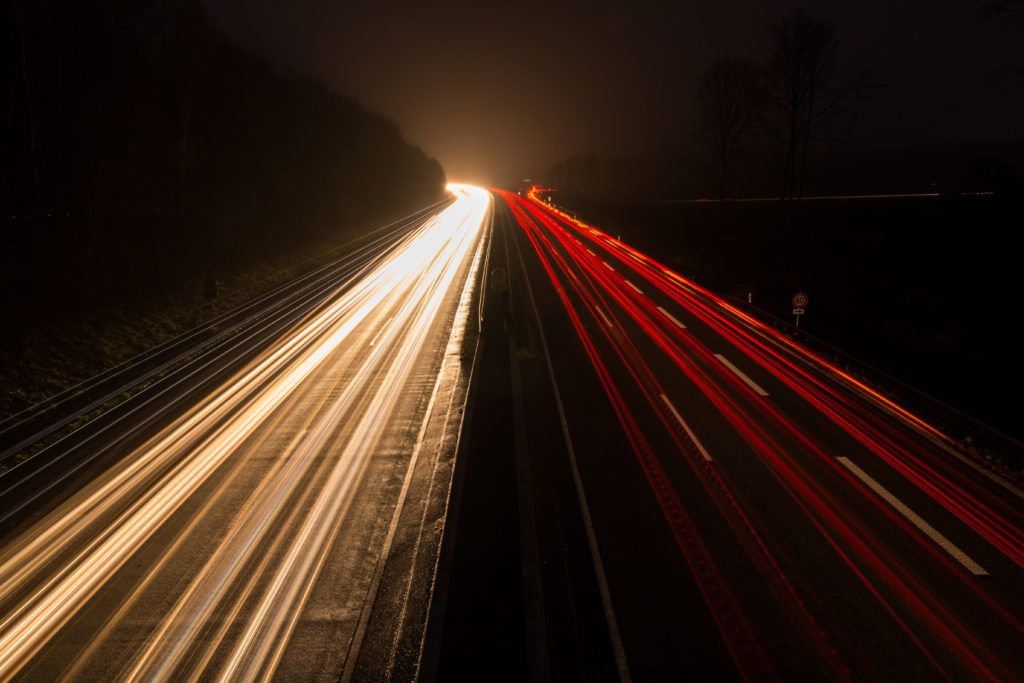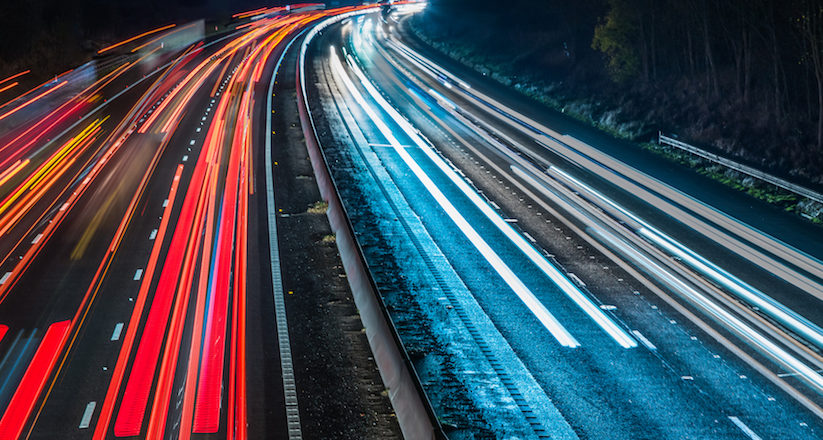How fast can your BMW go? I’m not sure about the precise terminal velocity of the one I keep in the garage, but I can assure you that the engine is nowhere near breathless at triple-digit speeds roughly 2.3 times that of our widely posted 65-mph limit. When it comes to opening things up on public roads, however, it’s only a matter of seconds until I’ve transformed into a societal pariah, the type that some overzealous road regulators might purposefully merge in front of at speed.
But now that California’s boondoggled high-speed rail project is proving to be the nothing more than transportation to nowhere, a state senator has put forth a proposal that would add additional lanes to two of the busiest thoroughfares in the republic, Interstate 5 and Highway 99. But instead of simply adding pavement to accommodate additional traffic , the bill, which can be read in its brief entirety here, specifically calls for the new lanes to be exempt from the speed limit that is typically posted for Interstates and state routes in California.
Authored by California State Senator John Moorlach, a Dutch-born legislator representing the 37th district, which covers over 30% of Orange County, the bill has grabbed national attention since being submitted. A recent interview with Sen. Moorlach and Road & Track reveals that the widespread coverage and interest was not expected, but that the response hasn’t been as depressing as one might expect. According to the lawmaker himself, the public seems to be split roughly down the middle on the subject, with a large portion of individuals—who likely lack an understanding of how traffic flows most efficiently in the first place—appearing fearful of high speeds, while others are champing at the bit to drop a gear—or four, if you’ve got DCT—and put the hammer down.

California is home to an inordinate number of vehicles that cannot be properly exercised without a visit to a spacious track. Example: the BMW M760Li xDrive uses a 6.6-liter V12 to hit 60 from a standstill in 3.6 seconds, while its (limited) top speed is 155 mph.
It should be obvious where I stand on the issue, and before you begin investigating Sen. Moorlach, other automotive-media outlets have already confirmed him to be an automobile appreciator. Beyond that, he’s also an advocate for left lane discipline, the crazy notion that slower traffic should keep right to allow faster drivers to pass unimpeded.
Unfortunately, even though the proposal sounds like the kind of thing many of us have been waiting for, it’s not predicted to fare well as it moves through the legislative process. A number of problems with the short but easily amendable bill have been pointed out, which range from how law enforcement would regulate speed limits in the other parallel lanes, to which vehicles would be prohibited from entering these potentially unlimited lanes. It’s bleak enough that we even have to address the latter—but then again, I find myself behind city garbage trucks in the left lane of the 65-mph state route I travel almost every day.

Another interesting caveat many are ignoring is driver training in the U.S., which is perhaps a fundamental source of our on-road frustration. While the process involved with becoming licensed to drive in Germany and other European Union states is lengthy, involved, and serious, our own hours of instruction, with written and practical exams, seem quite lax in comparison. Interestingly enough, Sen. Moorlach recognizes this as a potential catalyst for why so many people camp in the left lane as others angrily blow past them on the right, but errs on the positive side when it comes to individuals selecting a safe and prudent speed on their own for the unrestricted lanes.
Nor is unlimited speed a new idea in California. As LA developers expanded into the San Fernando Valley and began building freeways, they promoted the benefits of commuting at unrestricted speeds. The Arroyo Seco Parkway, for example, opened in 1940 with no posted speed limit. Think about that the next time you’re crawling along in first gear on the 405.
The bill also mentions emissions as a potential benefit, in hopes that the extra open and unlimited lanes would ease congestion. As many Californians know, idling in first gear (or second, if you drive a reasonably modern automatic) through gridlock is a perfect storm for increasing carbon emissions, while locking in cruise control at 80 or so is the perfect combination of high speed, low rpm, and optimized fuel consumption—maximum efficiency, in other words.
But there are diminishing returns with speed and efficiency, and recently, the German government has considered imposing a nationwide speed limit in hopes of curbing emissions.

Provided I could count on a Prius not pulling out in front of me as my BMW devours miles at a velocity greater than that of a Cessna 172 Skyhawk’s cruise speed, I consider myself ready though—and I think many of you are, too. Judging from the response to previous feature columns focused on similar subjects, those reading are the type to keep their head on a swivel, and signal early when changing lanes. Sadly though, in the interest of full disclosure, the original title of this article went something along the lines of, “Why We Won’t Deserve A California Autobahn,” as I’m afraid the best intentioned elected officials will have a hard time allowing the driving population of California to hop in the left lane and simply go as fast as they want—even though that’s what many of us just so happen to do anyway.—Alex Tock
[Photos courtesy BMW AG, Ken Lund, Dietmar Rabich.]





















